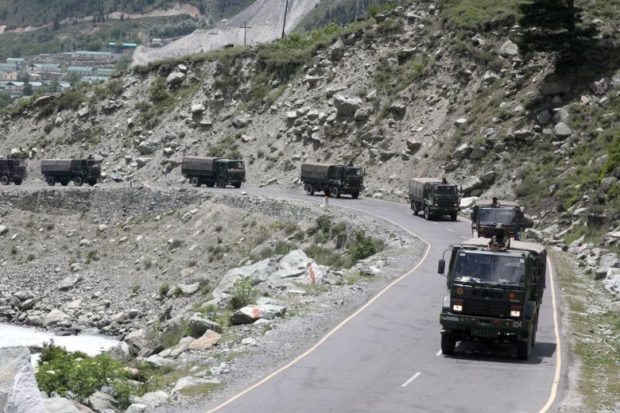India, China relations can’t go back to old normal after border clashes—analysts

The loss of lives on both sides means things can never go back to the old normal. EPA-EFE via The Straits Times/Asia News Network
BANGALORE — The border clashes between India and China at Galwan that killed at least 20 Indian troops have spurred both nationalist passions and intense geopolitical debate in both countries.
The killings are the first in 45 years between India and China. Analysts say the loss of lives on both sides means things can never go back to the old normal.
“We were hopeful that a disengagement was taking place. But it’s clear now that there was just a hardening of positions,” said retired Lt-Gen DS Hooda, who used to head the Indian army’s counter-insurgency operations in Jammu and Kashmir.
“I have not seen this level of violence between India and China since 1967. A quick de-escalation will not be easy,” he added.
Ms Nirupama Menon Rao, a former Indian ambassador to China, tweeted that the People’s Liberation Army of China’s official statement, saying that Indian forces were “seriously violating” mutual agreements, was in the tradition of Chinese communications before border clashes.
Article continues after this advertisement“Chinese always present themselves as the injured party and blame the opposite side for the consequences… Efforts made for normalization since 1976 have come to nought,” Ms Rao tweeted.
Article continues after this advertisementMr Pravin Sawhney, the editor of defense magazine Force, said the Indian army’s “highly subdued, highly defensive” initial statement about the nation’s sovereignty demolished its “façade of strength”.
Analysts list several underlying reasons for the clash: the competition between India and China over building infrastructure in the disputed territory, convergence of Indian and American geopolitical interests, and India’s strong public stance against China’s closeness to neighboring Pakistan.
But a key factor, many said, might be the Indian government’s decision last August to convert the northern state of Jammu and Kashmir into two federally administered territories. One of these is Ladakh, bordering China.
The Chinese Foreign Ministry spokesman had then said it undermined “China’s territorial sovereignty, which is unacceptable”.
Mr Sawhney said China had been creating a military ecosystem in the disputed territory since the 2017 Doklam stand-off, when Bhutan and India opposed Chinese construction of a road near the India-China-Bhutan border.
Satellite images by Planet Labs show dozens of new structures, most likely tents, on the north bank of Pangong Tso, one of the main points of contention in the current stand-off. These have sprung up in the past year.
“India’s military preparation is also fairly robust. But whether we want to go down this path to a conflict is a different question. There is still no clarity about what demands are, and what it will take for de-escalation,” Lt-Gen Hooda said.
The trade deficit between India and China is hugely in favor of China, and figures high in bilateral relations. Right-wing voices have called for a boycott of Chinese goods and investment in India.
#TeachLessonToChina and #WeStandWithIndianArmy were trending on Twitter in India.
In China, a Global Times editorial said India had misjudged Beijing on its will to defend itself against provocation, despite strategic pressure from the US.
On the Twitter-like Weibo, “China-India border conflict” was the fifth most searched topic on Wednesday afternoon, with 430 million interactions on the platform, with 67,000 users discussing the topic.
“We urge India not to treat China’s restraint as weakness,” wrote one user.
While news of the clash appeared on the state-run newspapers, most Chinese language media portals appeared to be circumspect about the issue.